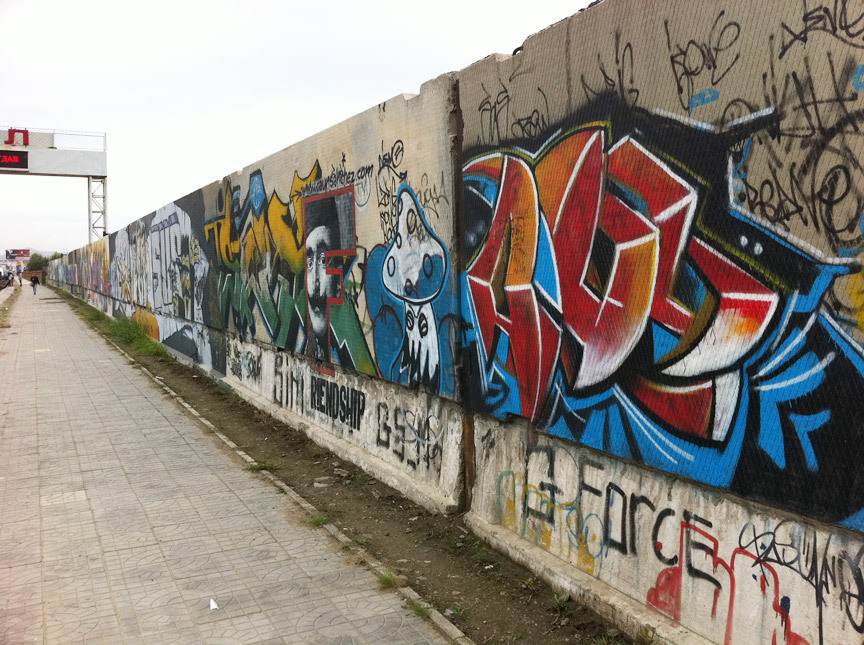
R
E
V N
E
X
T
Though new trends are being increasingly embraced in Mongolia, its contemporary art community is still a nascent presence, relying on varying support from governmental, corporate and private sources. AAP braved the notoriously car-jammed roads of Ulaanbaatar to stop by some of the few spaces that feature contemporary Mongolian art, such as the Mongolian National Modern Art Gallery and Design Park.
In Ulaanbaatar, AAP also took part in Tiger Translate Mongolia, a multi-day art event sponsored by Asia Pacific Breweries’ Tiger Beer brand. Three international artists—from Australia and the Philippines—and six Mongolian artists, selected through regional competitions, were divided into three teams to each create a collaborative work on canvas. For inspiration, the artist teams toured various sites in Ulaanbaatar, ranging from tourist attractions such as the Zaisan Memorial to a stretch of street walls adorned with graffiti. After working on the pieces for three days, each project was completed during a “global showcase” on the final night—at a nightclub—where the artists participated in a live art performance in front of a crowd of Mongolian partygoers and art enthusiasts.



